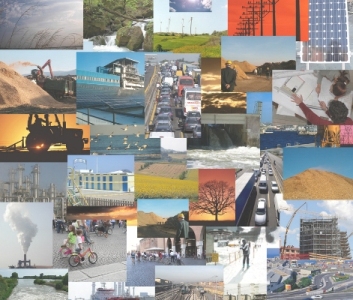Newsletter
- Issue VIII / November 2013
- Issue VII / June 2013
- Issue VI / February 2013
- Issue V / June 2012
- Issue IV / November 2011
- Issue III / July 2011
- Issue II / January 2011
-
Issue I / September 2010
- Editorial: Welcome note by Werner Sommer, representative of the Lead Partner
- A successful start for EnercitEE
- The sub-project priorities and the 1st Call for Proposals
- Regional kick-off events
- An introduction to Saxony
- An introduction to Smaland (Kalmar and Kronoberg)/Blekinge
- An introduction to Emilia-Romagna
- An introduction to Haute-Savoie
- An introduction to Crete
- An introduction to Lower Silesia
- EnercitEE: An overview
- Information and materials
An introduction to Emilia-Romagna
Emilia-Romagna is one of 20 Italian administrative regions and is one of the 15 macro sub-regions of the European Union with the highest economic development levels. With a surface area of more than 22,000 square kilometres and a population of over 4.3 million inhabitants, Emilia-Romagna is one of the largest and most highly populated regions in Italy. Emilia-Romagna has the fifth highest pro-capita income in Italy (ISTAT, 2009); this is due to the highly competitive industry and agriculture. 
The energy sector plays a strategic role within the region; in fact Emilia-Romagna Region is very active in the development and implementation of energy policies. In 2004, in response to the poor results of national initiatives, the Emilia-Romagna region developed the Regional Energy Law (26/2004) and the Regional Energy Plan (REP), which was approved at the end of 2007.
The main focuses of the REP are in the field of energy efficiency and in the promotion of renewable energy sources (via interventions for the “green economy”; building, manufacturing and agro-food, and for the public sector). Particular attention is also devoted to innovation and new technologies as a key transversal regional policy. These interventions will be the main pillars of the new Regional Energy Three Annual Plan, as recently announced during the last conference on the REP, which was held in Bologna on 28th July.
Within the framework of EnercitEE, the Emilia-Romagna region’s Energy Policy Department will fund initiatives to provide local governments and public bodies with tools to promote the implementation of concrete energy efficiency measures, and, moreover, to acquire and exchange experiences for improving regional energy policy.
In addition, thanks to EnercitEE, the Energy Policy Department will work together with the regional consortium ASTER. It will have the opportunity to cooperate at an international level with other regions, as well as with energy agencies, to identify and exchange good practices and experiences in the field of energy efficiency for citizens and local authorities.
